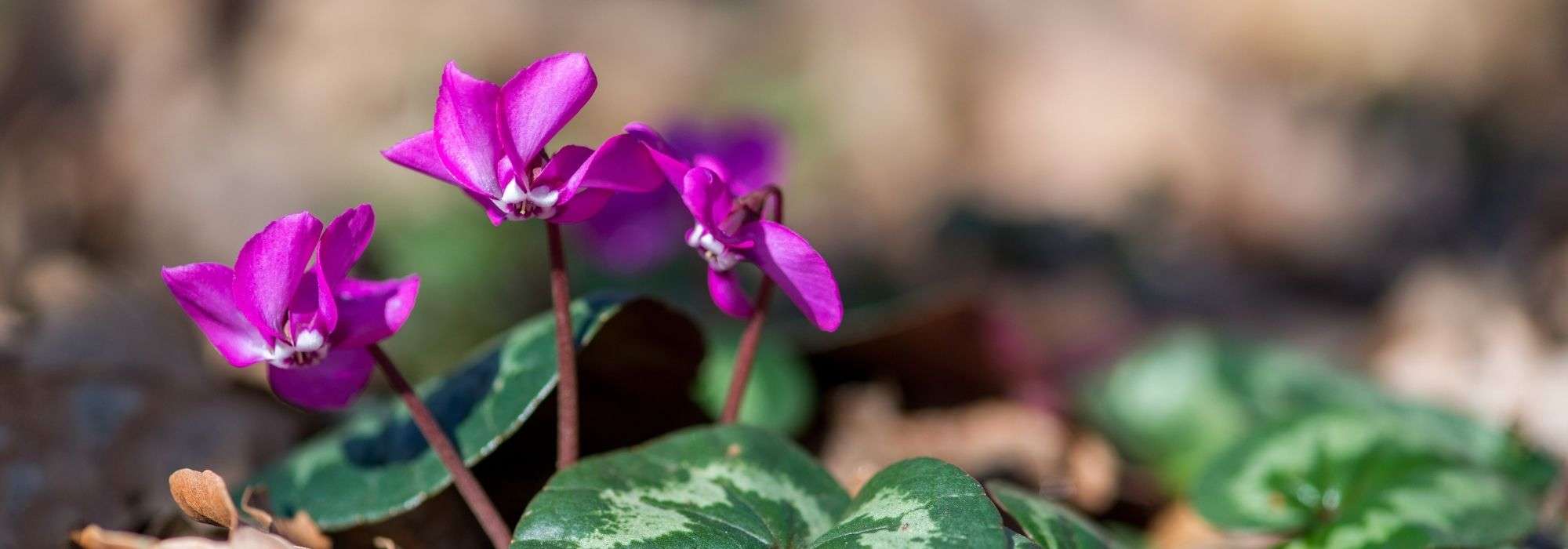
How to pair ivy-leaved cyclamen?
Ideas and inspirations for pairing ivy-leaved cyclamen in the garden
Contents
Small perennial plants with late flowering, Naples cyclamens delicately announce the end of summer. Their fragrant flowers resemble small butterfly wings and come in shades of pink or white, depending on the variety.
Easy to grow, ivy-leaved cyclamens (cyclamen hederifolium) thrive in shady or partially shaded situations, making them perfect candidates for areas that can be challenging to plant. To learn more, feel free to read our dedicated article “Cyclamen: plant, grow and maintain.”
Whether at the foot of trees, in a cool rockery, in a border, or even in pots, they easily blend into the garden and create beautiful autumn scenes.
Here are our successful pairing ideas to try!
For a flowering autumn container
The small dimensions of Naples cyclamen, barely exceeding twenty centimetres, are perfectly suited for container cultivation. Opt for beautiful planters, bowls, or troughs to easily green up a terrace, balcony, or windowsill.
To create a lovely autumn display, don’t hesitate to combine pink Naples cyclamen with white varieties. Accompany them with colchicums in similar tones. For the whites, choose the colchicum autumnale ‘Album’ with its star-shaped flowers, ‘Alboplenum’ with its beautiful double flowers, or the colchicum macrophyllum white veined with pink. For the pink varieties, opt for the hybrid colchicum ‘Waterlily’ with its multiple petals, the colchicum autumnale ‘Major’, or the Cilician colchicum, with flowers reminiscent of crocuses.
With them, add other autumn-flowering plants, such as pink nerines, white saffron crocus, or even the false crocus Sternbergia lutea, to bring a dynamic yellow touch to your display.
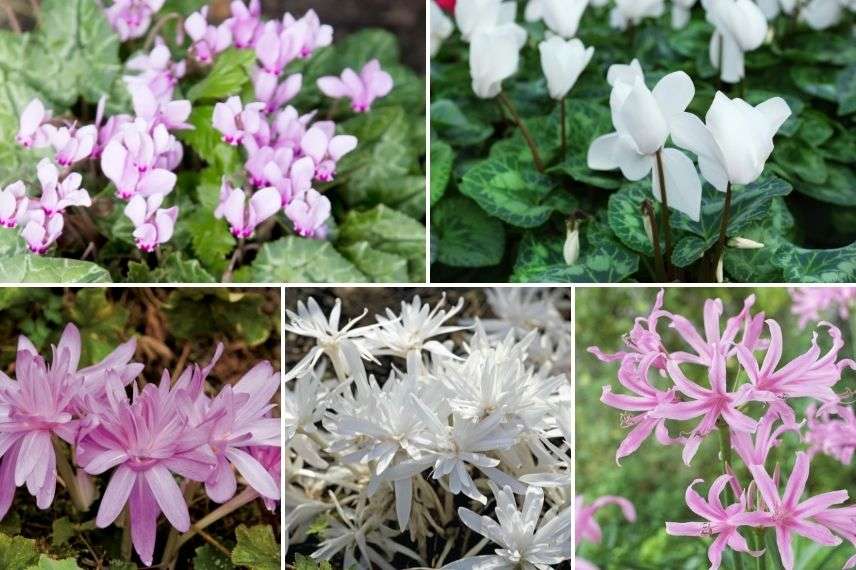
Pink and white Naples cyclamen associated with Colchicums ‘Waterlily’ (Copyright Horticolor) and ‘Alboplenum’ (Copyright GWI Terry Jennings – MAP Mise au Point) and Nerines ‘Aphrodite’
Read also
6 bulbs easy to naturalise in the gardenWith spring bulbs
If cyclamen are perfect when accompanied by other autumn bulbs, they also pair very well with spring bulbs. Their flowering will indeed precede (or follow) that of our little plants, creating beautiful carpets of flowers, for an extended effect lasting several months.
Among them, choose from the delicate snowdrops, crocuses, the charming clusters of muscari, the elegant hyacinths, chionodoxa, dwarf daffodils, the less common scilla, or even early tulips.
Don’t forget the white coum cyclamen or pink ones, often associated with Naples cyclamen, as they help extend the flowering period into early spring.
In terms of colours, opt for a gradient of pinks and purples, a monochrome white, or even a multicoloured scheme, depending on your tastes and desires.
Use these combinations as groundcover, for example, to brighten up a lawn, or as borders.

Galanthus nivalis (photo Wikipedia), Cyclamen neapolitanum, Cyclamen coum, Chionodoxa forbesii ‘Violet Beauty’, Crocus ‘Vanguard’ and Hyacinthus ‘Fondant’
Discover other Cyclamen
View all →Available in 0 sizes
Available in 1 sizes
Available in 1 sizes
Available in 1 sizes
Available in 1 sizes
Available in 1 sizes
Available in 1 sizes
Available in 1 sizes
Available in 2 sizes
Available in 1 sizes
With decorative foliage
Naples cyclamens have deciduous foliage: it appears from November to May, before disappearing at the end of summer during the plant’s dormancy period. Pairing them with decorative foliage that will take over in summer or persist throughout the year will help maintain an aesthetic appearance in all seasons.
Turn to the essentials heucheras, well-known for the beauty of their foliage. Whether in pots or at the foot of a tree, ivy with its small triangular leaves will also pair well with cyclamens. Opt for small varieties with variegated foliage, such as Hedera helix ‘Goldchild’ or Hedera helix ‘Marginata Elegantissima’.
Also consider heathers and their diverse colours of white, red, pink, or purple, bringing plenty of light. Their winter flowering will follow that of our cyclamens.
Although deciduous, hostas will also be good companions, disappearing in autumn when the cyclamens are in full bloom.
For a natural and wild touch, evergreen ferns will be ideal. Their fronds, whether frizzy, undulate, or curled, have undeniable decorative qualities even in winter. Opt for polystichum, for example.
Let’s not forget ornamental grasses, perfect for adding a graphic, modern, and light touch: stipa, carex, or Chinese fountain grass, whose foliage will be evergreen in warm regions. Panicum will take on beautiful autumn colours before disappearing at the end of winter, just like miscanthus, which will add a lovely exotic note.

Hedera helix ‘Marginata Elegantissima’, Cyclamen neapolitanum, Hosta ‘Francee’, Calluna ‘H.E. Beale’, Polystichum acrostichoides, and Erica carnea ‘Springwood White’
Read also
When and how to plant cyclamen?With other perennial flowers for extended flowering
In a border, a low hedge, or a mixed border, combine Naples cyclamen with other perennial plants that flower at various times of the year.
The varieties of small periwinkles in white (Vinca minor ‘Alba’, Vinca minor ‘White Power’) or mauve (Vinca minor ‘Illumination’ and its beautiful variegated foliage) will be perfect. Primroses, pansies and violas or wild coreopsis will also make good companions.
As for the hardy geraniums, they will be ideal candidates for a cool, semi-shaded rockery alongside our cyclamen, just like ajugas and saxifrages. For the latter, which will accompany the flowering of the cyclamen, choose white varieties (Saxifraga fortunei ‘Rubrifolia’, Saxifraga cortusifolia ‘Cheap Confections’) or pink (Saxifraga cortusifolia ‘Black Ruby’, Saxifraga fortunei ‘Sugar Plum Fairy’) for a lovely harmony of colours.
At the foot of deciduous trees, combine Naples cyclamen with beautiful hellebores, offering a variety of colours. The Montia or Claytonia sibirica will accompany the autumn flowering of Naples cyclamen, with its small pale pink flowers veined with bright pink, which will pair beautifully with both pink and white varieties. Despite its short lifespan, it will self-seed and make a good companion in light woodland.

Naples cyclamen ‘Album’, Claytonia sibirica (photo P. Stevens), Coreopsis rosea ‘Sweet Dreams’, Vinca major ‘Alba’ (photo Wikipedia) and Saxifraga cortusifolia ‘Black Ruby’
For a bed with autumn flowering
Pair other late-flowering plants with Naples cyclamen to create a beautiful, colourful autumn display.
The small silhouettes of Naples cyclamen will be placed at the front of the bed, accompanied by dwarf asters such as Aster dumosus ‘Lady In Blue’, the tall white spires of cimicifugas, Japanese anemones, sedums flowering in autumn, echinaceas, or persicarias. This combination will create a lovely partnership with the cyclamen, especially when choosing varieties in pink or white tones.
As essential autumn flowers, the dahlias will also shine. The tallest will be placed in the middle of the bed: try the vibrant dahlia ball ‘Purple Fox’ in bright pink, the collarette dahlia ‘Teesbrook Audrey’ reminiscent of a daisy, the giant dahlia ‘Fleurel’ with large white pom-poms, or the camellia dahlia ‘Offshore Dream’ in a soft pink.
At the back of the bed, light-foliaged grasses and repeat flowering climbing roses (‘Alaska’, ‘Mini Eden Rose’, or ‘Sourire d’Orchidée’ for example) will wonderfully complete the decor while adding height.
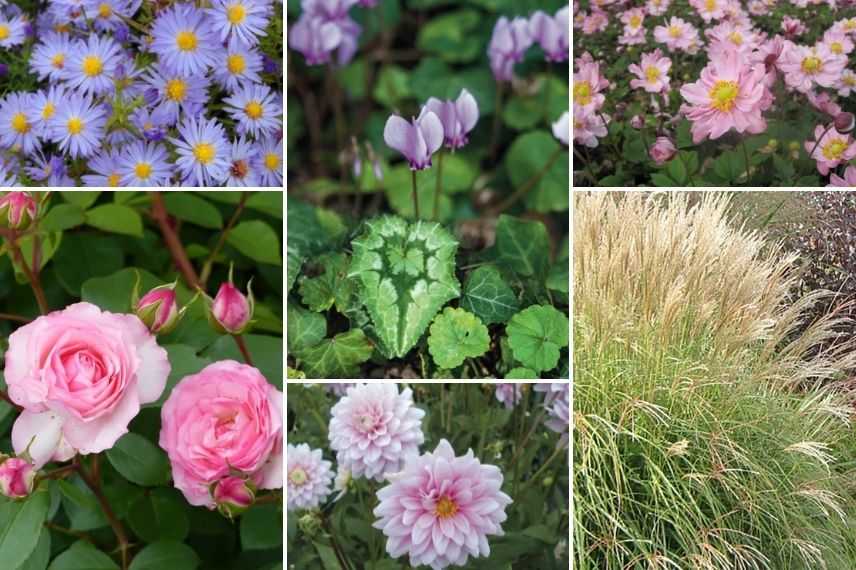
Aster dumosus ‘Lady in Blue’, Cyclamen neapolitanum, Anemone ‘Fantasy Pocahontas’, Rosa ‘Mini Eden Rose’, Dahlia ‘Offshore Dream’ and Miscanthus ‘Yaku-Jima’
- Subscribe!
- Contents
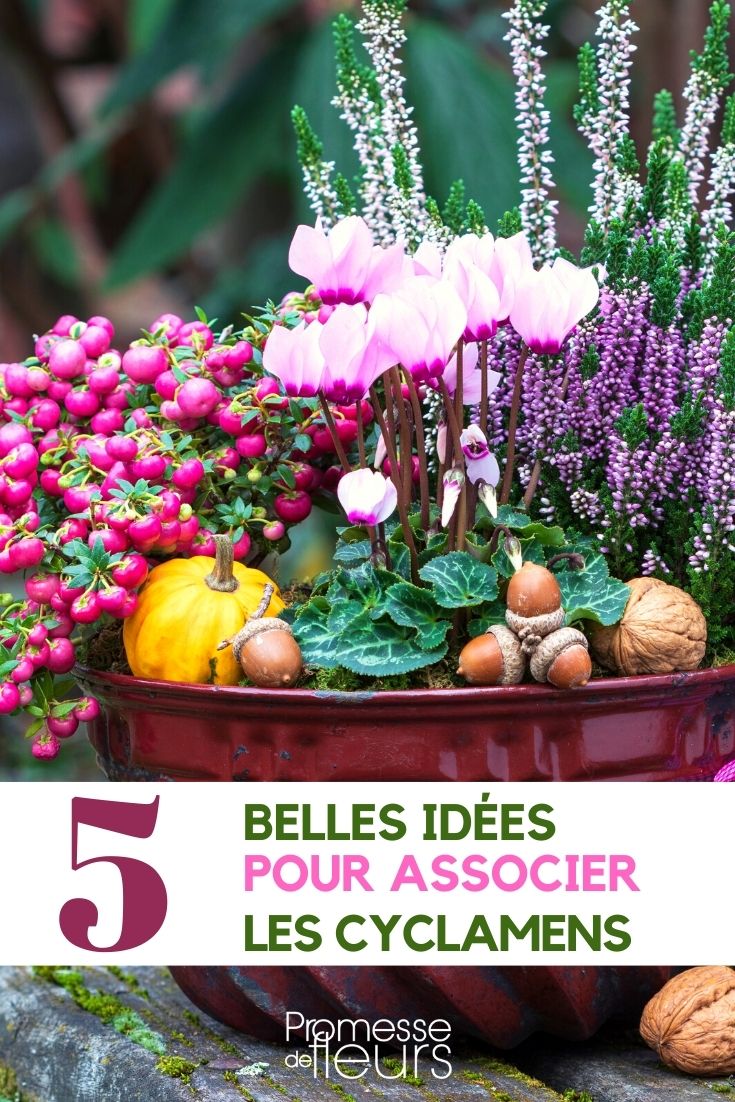
































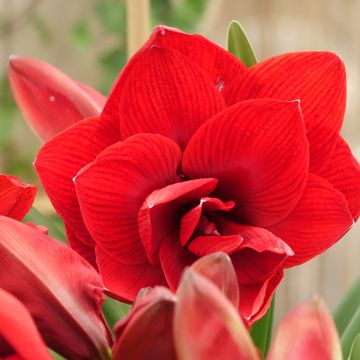
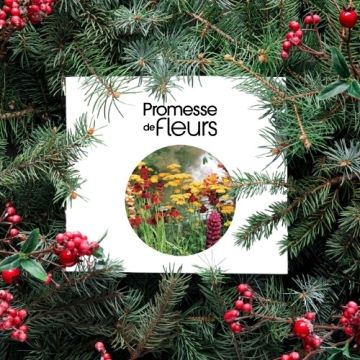
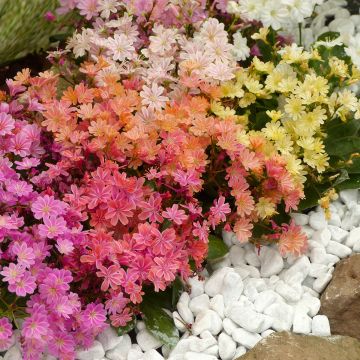
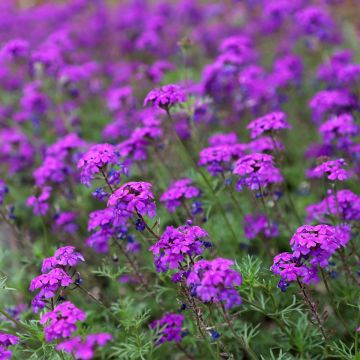

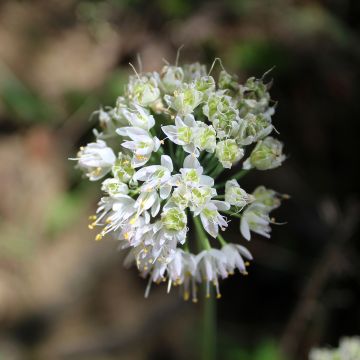
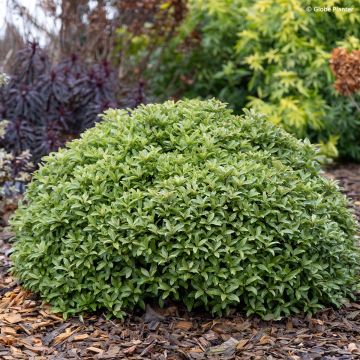
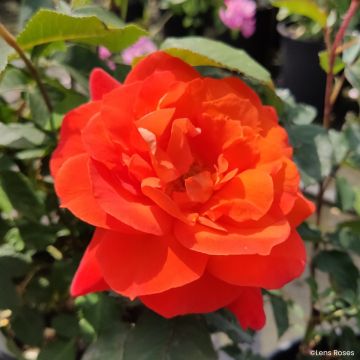

Comments